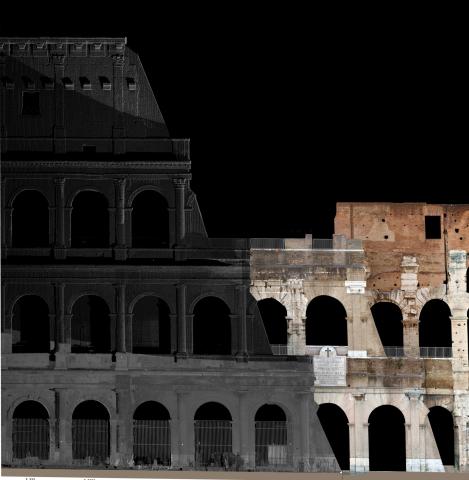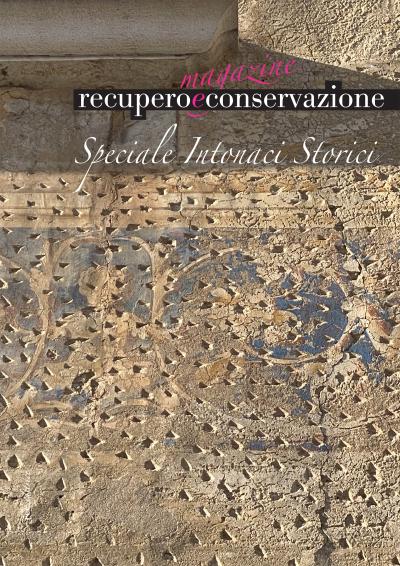PREMESSA
La bibliografia del restauro degli ultimi 30 anni è ricca di contributi che si interrogano sull’importanza di conservare e rispettare la ‘pelle’ degli edifici e di operare per preservare gli intonaci antichi, testimonianza di saperi e capacità artigianali tramandate nei secoli. [...]
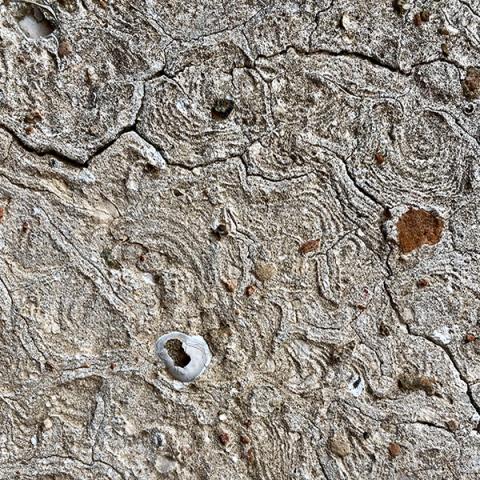
La pesante eredità degli intonaci storici
In apertura a questo numero monografico sul restauro degli intonaci propongo alcune riflessioni particolari con lo scopo di estendere la percezione del tema. È un modo nuovo di affrontare il problema perché riporta piccoli brani tratti pubblicati negli ultimi numeri di questa rivista. Lo scopo è molteplice: stimolare la rilettura di quei saggi, sottolineare come il tema sia sempre assai complesso, che non c’è mai una soluzione unica valida in ogni contesto e che la cultura del restauro, pur nella specificità di ognuno, parla una lingua unica.
THE INHERITANCE OF PLASTERS
For this monographic issue about restoration of plaster I will suggest some specific considerations with the aim to put more attention to the topic.
It is a new approach to deal with the problem because it brings back some articles that were published in the last issues of this periodical.
The goal is various: encourage the reading of these articles and underline the complexity of this problem. In the restoration, there is never a unique solution.
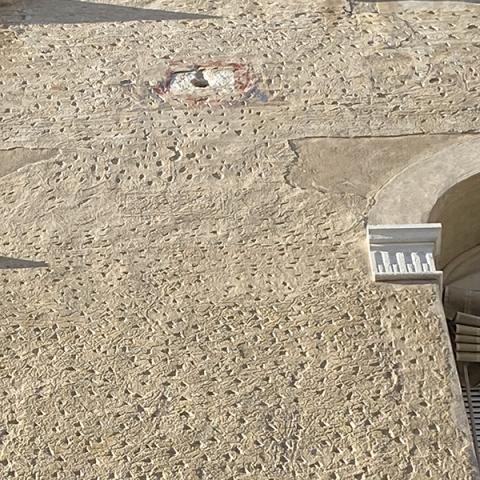
L’IMMAGINE DEL TEMPO
La pratica del restauro e della manutenzione delle superfici intonacate e dei loro colori, nonostante alcuni progressi, è nel complesso ancora deludente. Gli interventi sono spesso grossolani ed errati, anche sotto il profilo puramente tecnico; altre volte sono di migliore qualità, ma troppo estesi e pesanti, immemori d’uno dei fondamentali criteri del restauro, quello del ‘minimo intervento’. Le superfici, infatti, sono certamente ‘luoghi di degrado’ ma anche di testimonianza storica e di significativi valori estetici.
THE IMAGE OF TIME
The practice of restoring and maintaining the plastered surfaces and their colours, despite some progress, is in general still disappointing. The interventions are often rude and wrong, even from a purely technical point of view; other times they are of better quality, but too extensive and heavy, oblivious to one of the fundamental criteria of restoration, that of the 'minimum intervention'. The surfaces, in fact, are certainly 'places of decay' but also of historical evidence and significant aesthetic values.
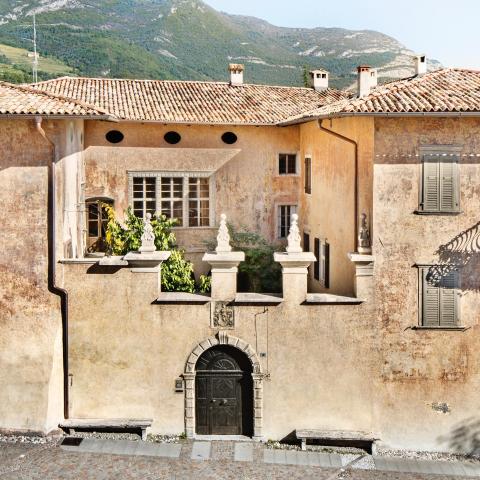
INTONACI STORICI
La lettura dei dati materici contenuti negli intonaci storici delle facciate, condotta attraverso l’osservazione diretta, può essere anche l’unica possibilità di conoscere il processo di costruzione e trasformazione che ha portato alla configurazione della superficie su cui si deve intervenire. Un attento esame visivo degli strati e delle finiture, accompagnato da saggi stratigrafici, saprà indirizzare in modo puntuale ed economicamente misurata la successiva fase di approfondimento diagnostico.
HISTORICAL PLASTERS
The reading of the material data contained in the historical surfaces of the facades, conducted through direct observation, can also be the only possibility to know the process of construction and transformation that led to the configuration of the surface on which you have to intervene. A careful visual examination of the layers and finishes, accompanied by stratigraphic tests, will address in a timely and economically measured the next phase of diagnostic deepening.

LA ‘DIAGNOSTICA CHE SERVE’
Lo sviluppo di un piano diagnostico può essere declinato secondo diversi punti di vista, combinando tecniche non distruttive e/o microdistruttive. La parte più delicata, tuttavia, del progetto diagnostico, deve svilupparsi soprattutto attorno alle domande che fanno nascere l’esigenza di approfondire le conoscenze attraverso tecniche di indagine scientifica. Il progetto diagnostico, quindi, deve scaturire dalla collaborazione tra le figure che ruotano attorno ai Beni Culturali da analizzare: gli storici dell’arte, i funzionari delle soprintendenze, i restauratori e l’esperto di diagnostica. Tanto più sono precise le richieste che provengono dalle prime figure, tanto più efficace potrà essere la risposta che l’esperto di diagnostica potrà fornire attraverso le diverse metodiche di indagine. Nel presente articolo vengono analizzate alcune situazioni tipiche di cantieri di restauro evidenziando l’approccio nella scelta delle indagini più appropriate e i risultati ottenuti.
THE USEFUL DIAGNOSTICS
The development of a diagnostic project can be developed according to different points of view, combining non-destructive and / or micro-destructive techniques. The most delicate part, however, of the diagnostic project must develop around the questions that give rise to the need to deepen knowledge through scientific investigation techniques. The diagnostic project, therefore, must arise from the collaboration between the figures that revolve around the Cultural Heritage to be analyzed: art historians, superintendents, restorers and the diagnostics expert. The more precise the requests coming from the first figures are, the more effective the response that the expert of diagnostics will be able to provide through the various investigation methods. This article analyzes some typical situations of restoration sites, highlighting the approach in choosing the most appropriate investigations and the results obtained.
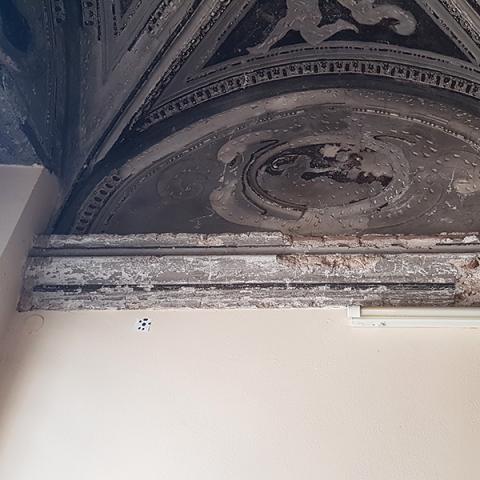
DEL METODO E DELL’EMOZIONE
Il restauro è fatto anche di passione ed emozioni. Perché è emozionante delaminare strati sovrammessi e scoprire come lo stesso edificio, lo stesso ambiente, la stessa superficie si siano trasformati e come lo stesso materiale sia stato utilizzato in modi differenti. [...]
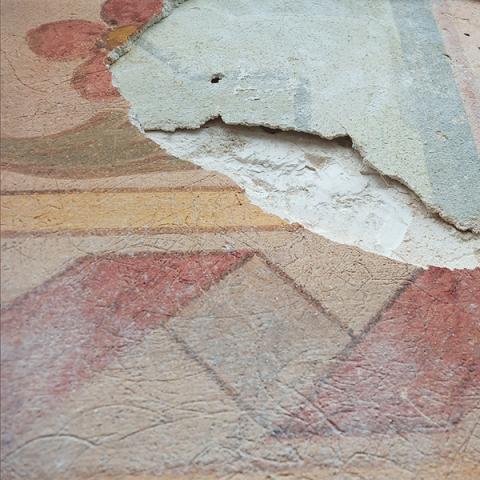
MALTE DA INTONACO
La situazione dell’attuale mercato dei leganti e delle malte per intonacature, e la lacunosità della normativa, mettono in seria difficoltà il progettista o l'utilizzatore che, a fronte della necessità di interventi sempre più frequenti di manutenzione e/o conservazione delle superfici intonacate, antiche o moderne, e consapevole dei problemi legati alle compatibilità tecnologiche dei materiali, voglia compiere scelte congruenti.
PLASTERING MORTARS
The situation of the current market of binders and mortars for plasterwork, and the gaps in the standards, put in a difficult situation the designer or the user who wants to take appropriate choices in the face of the necessity of more frequent maintenance and / or conservation of plastered surfaces, ancient or modern, and aware of the problems related to the technological compatibility of materials.
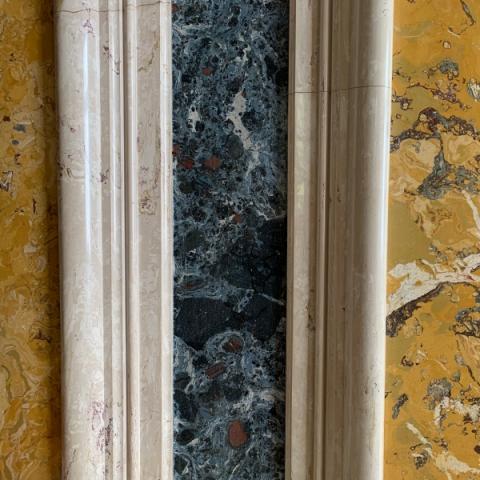
I MATERIALI POZZOLANICI
I materiali leganti della tradizione costruttiva, ottenuti miscelando calce aerea e pozzolane di varia natura, possono oggi rappresentare una valida alternativa ai leganti a base di cemento Portland in virtù delle loro caratteristiche di compatibilità con il costruito storico e di sostenibilità. L’impiego della pozzolana “una polvere dalle qualità straordinarie” ha consentito in passato di edificare monumenti che hanno vinto la sfida dei secoli e di costruire opere infrastrutturali ed idrauliche di grande portata. Oggi si ha a disposizione una vasta gamma di prodotti sia naturali che artificiali che riescono a replicare le prestazioni della pozzolana. La nuova sfida di questi anni è quella di sostituire la pozzolana con materiali di scarto provenienti da processi sia industriali che agro-alimentare, con il duplice obiettivo di ridurre lo sfruttamento delle risorse naturali e valorizzare nuove materie prime seconde nell’ottica di un’economia circolare.
POZZOLANIC MATERIALS
The binding materials in historical construction, obtained by mixing aerial lime and different kind of pozzolans, can today represent a “green” alternative to Portland cement by means of their characteristics of compatibility with the historical construction and sustainability. The use of pozzolan "a powder with extraordinary qualities" has allowed in the past to build monuments that have won the challenge of the centuries and to build infrastructural and hydraulic works of great importance. Today there is a wide range of both natural and artificial products that are able to replicate the performance of pozzolana. The new challenge of these years is to replace pozzolan with waste materials from both industrial and agri-food processes, with the dual objective of reducing the exploitation of natural resources and enhancing new secondary raw materials with a view to a circular economy.
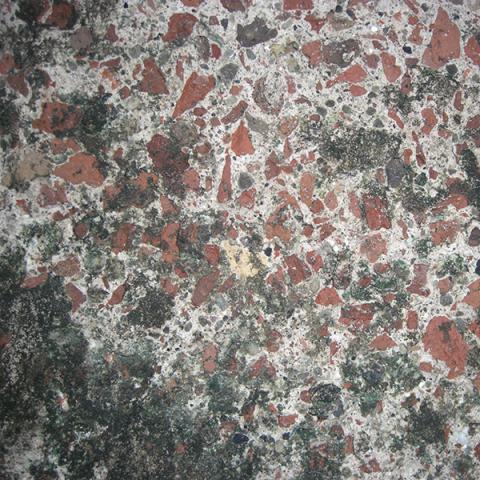
INTONACI CON MATERIALI ARIDI DI RECUPERO
L’articolo racconta il caso virtuoso dell’attività di recupero di materiali di scarto (cotto, mattonelle, pianelle, ecc.) per la realizzazione di nuovi intonaci, attività nata quasi casualmente nell’ambito di un cantiere relativo ad un borgo medievale in Irpinia. La difficoltà del trasporto del materiale verso il cantiere e fuori dal cantiere induce ad affinare una pratica di recupero che verrà poi ripetuta in altri contesti dimostrando la propria bontà ed efficacia. L’intonaco ottenuto dal riciclo di materiali in cantiere, attraverso una filiera corta e, forse, anche colta…dimostra in breve ottime caratteristiche di qualità non solo in termini di composizione ma soprattutto in una prospettiva di economia circolare, che oggi è argomento più che mai attuale e oggetto di attenzione in ogni ambito produttivo. Come ripetere tale attività all’interno delle griglie normative attuali?
PLASTERS WITH WATE MATERIALS
The article describes the successful recovery of waste materials (terracotta, tiles, etc.) to make new plasters, an activity that originated almost by chance on a building site in a medieval village in Irpinia.
The difficulty of carrying the material to and from the site led to the refinement of a recovery practice that would later be repeated in other contexts, demonstrating its quality and efficacy.
The plaster obtained from the recycling of materials on the building site, through a short and, perhaps, cultured supply chain... briefly demonstrates excellent quality characteristics not only in terms of composition but, above all, in a perspective of circular economy, which actually is a current topic and the object of attention in every production context. How can this activity be repeated within the current regulatory grids?
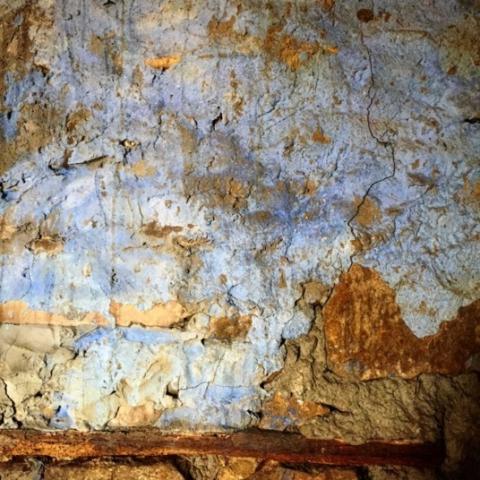
AGGREGATI LOCALI E RECUPERO DEL PATRIMONIO EDIFICATO
Ogni genere di intervento sulle superfici architettoniche con intonaci non tinteggiati o decorati può avere un basilare ruolo nella conservazione dell’immagine stratificata e storicizzata degli edifici. Nel delineare il generale requisito di compatibilità (chimico-fisica, meccanica, di aspetto, p.e.) risulta di primaria importanza – tra gli altri aspetti - il ruolo degli aggregati, per le caratteristiche di costituzione e le peculiarità estetiche che questi conferiscono a malte, intonaci e conglomerati. Con ciò, la conoscenza dell’uso storico di sabbie locali è di particolare rilievo per orientare scelte consapevoli verso materiali e soluzioni consonanti con il palinsesto originario.
LOCAL AGGREGATES AND RECOVERY OF THE BUILT HERITAGE
Any kind of intervention on architectural surfaces with unpainted or decorated plaster can play a basic role in the preservation of the stratified and historical image of buildings. In outlining the general requirement of compatibility (chemical-physical, mechanical, appearance, e.g.) is of primary importance - among other aspects - the contribution of aggregates, because of the characteristics of constitution and aesthetic peculiarities that these give to mortars, plasters and conglomerates. Therefore, the knowledge of the historical use of local sands is of singular relevance to orientate conscious choices towards materials and solutions according to the original opera.
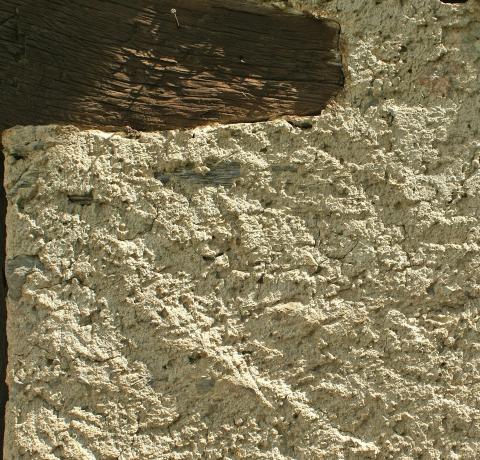
LE FINITURE DELLE SUPERFICI LATERIZIE NELL'EDILIZIA STORICA PADANA
Vari edifici monumentali di Ferrara e Bologna sono stati indagati per determinarne gli aspetti originali e le possibili alterazioni che hanno subito in passato.
Molti esemplari provenienti dalle tracce residue di intonaci, coloranti, stucchi, finiture originali (scialbatura e "sagramatura") insieme ai mattoni sottostanti, sono stati studiati nel Laboratorio del "Centro Cesare Gnudi" negli anni '90 del secolo scorso, con vari metodi analitici per determinare se fossero originali, così come i materiali e le tecniche utilizzate.
STUDY OF HISTORICAL FINISHES IN THE PO VALLEY AREA
Different monumental buildings in Ferrara and Bologna were investigated to determine their original aspects and any alterations they underwent in the past.
Many specimens from the residual traces of plasters, colourings, stuccos, original finish (whitewashing and “sagramatura”) together with the underlying bricks, were studied in the Laboratory “Centro Cesare Gnudi” in the 90s of the last century, by various analytical methods to determine if they were original, as well as the materials and techniques adopted.
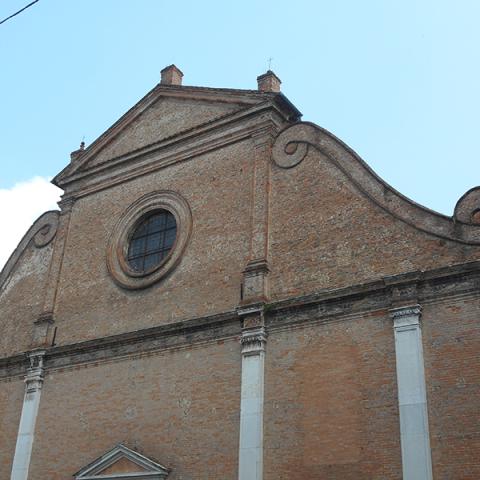
SILENZI (IMBARAZZANTI) DELLA POLITICA E TIMIDEZZE DELLA DISCIPLINA
Le superfici di finitura degli edifici d’interesse storico e artistico sono documenti della storia che non hanno mai suscitato l’interesse nel legislatore. Per questo, non sono mai stati abbastanza protetti e, di recente, le norme per il risparmio energetico rischiano di decretarne definitivamente l’oblio. È compito della disciplina riempire questo vuoto, superando le incertezze nate dalle contrapposizioni, aggiornando gli strumenti per l’esercizio della tutela (come la Carta del Restauro), per una valorizzazione che sia capace di generare ancora capitale sociale.
THE AWKWARD SILENCE OF POLITICS AND THE TIMIDITY OF DISCIPLINE
The finishing surfaces of historical and artistic buildings are documents of history. They haven’t attracted the interest of legislators. Therefore, they have never been sufficiently protected and, recently, the regulations for energy saving are in danger of definitively decreeing their oblivion. It is the task of the discipline to fill this void, overcoming the uncertainties born of the contrasts, updating the tools for the exercise of protection (such as the Charter of Restoration), for a valorization that is able to generate social capital again.
